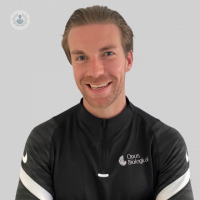Paediatric physiotherapy
What is paediatric physical therapy?
Paediatric physiotherapy, or children’s physiotherapy, aims to manage or treat congenital diseases and acquired injuries in babies and children. It focuses on several areas of the child:

Why is child physiotherapy performed?
Child physiotherapy centres on the care and treatment of children and babies with problems such as:
- Acute soft tissue injuries, such as ligament sprains and joint injuries
- Fractures
- Congenital conditions such as clubfoot
- Coordination problems
- Breathing difficulties
- Developmental conditions such as cerebral palsy
- Learning difficulties
- Developmental delays
The main objective is to provide children with full functionality so that they can reach their full potential, promote wellbeing and enjoy a good quality of life. Children have specific physical, developmental, mental and emotional needs that are different from adults and have to be considered.
What does child physiotherapy consist of?
Child physiotherapy involves the use of a wide variety of activities that might include bobath, reflex locomotion therapy, respiratory massage therapy, hydrotherapy, respiratory care, etc. The activities are tailored to suit the child’s needs and goals.
Before deciding on the right treatment, a paediatric physiotherapist will evaluate the child. This will look at the child's:
- Motor development
- Respiratory function
- Mobility
- Posture
- Musculoskeletal state
- Coordination
- Balance
The role of parents or guardians in rehabilitation is especially important since much of the therapy is based on a series of exercises that the child will have to perform at home with the help of family members.
After treatment
It is important that parents and guardians fully understand how the exercises should be performed. This will ensure that the child performs the exercises correctly at home and help to avoid them having problems again in the future.
